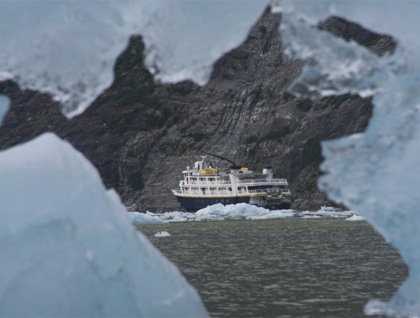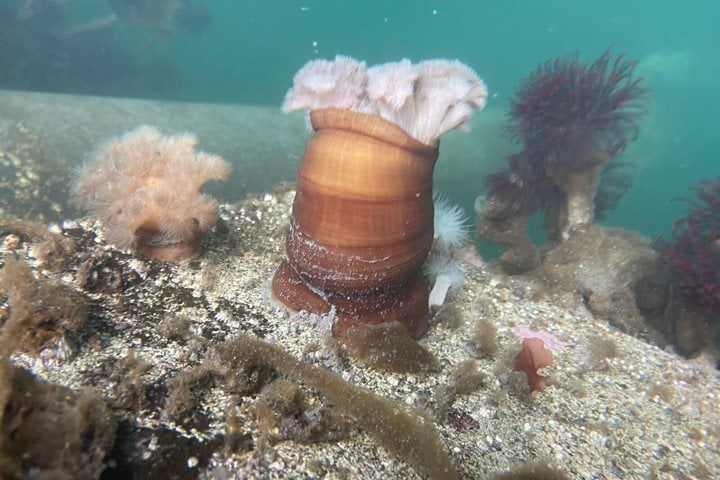We awoke to beautiful sunny skies, approaching Williams Cove.
Soon after breakfast most were ashore walking through the forest. We saw now-familiar Sitka spruce, western hemlock, and the many ferns and mosses that make up the rich understory of the woods here. Later, most boated around Williams Cove. Those in expedition landing craft saw diving ducks that dine in the cove’s depths, and discovered hidden waterfalls. Icebergs, trapped by the bar at the mouth of Tracy Arm, glowed brilliantly as the sun shone through them. Kayakers enjoyed the quiet of self-propelled watercraft and soaked up the sun on this brilliant morning.
After lunch most of us went outside to enjoy the stunning scenery of Tracy Arm. Elsewhere in Southeast Alaska rocks are generally fragmented by the accretionary process. But in Tracy Arm, hard plutonic rock such as granite makes the perfect medium for glacial sculpture. We cruised by vast walls striated by the glacier’s stony belly, and stared upward at peaks thousands of feet high, yet rounded by ice during the Pleistocene.
By now, we all knew how to recognize the proximity of tidewater glaciers. The color of the water went from deep to pale jade as glacial flour in the water thickened. Icebergs became more and more numerous. And here we dropped small boats for a close look at South Sawyer Glacier.
We wound our way through bergs of all sizes. Some were huge, and of a deep glowing blue. Others were tiny, and clear as glass or white as snow. And at last we drew near to the glacier. More than half a mile wide and in places two hundred feet high, South Sawyer imposing and beautiful. Seals rested on icebergs around us, secure in knowing that they are safe from any land predator, and their chief enemy, killer whales, have difficulty hunting among the bergs. And the glacier calved. With deep rumbles or cannon-like booms, ice fell into the sea. It was an impressive sight, one fitting to conclude our travels in Alaska.







